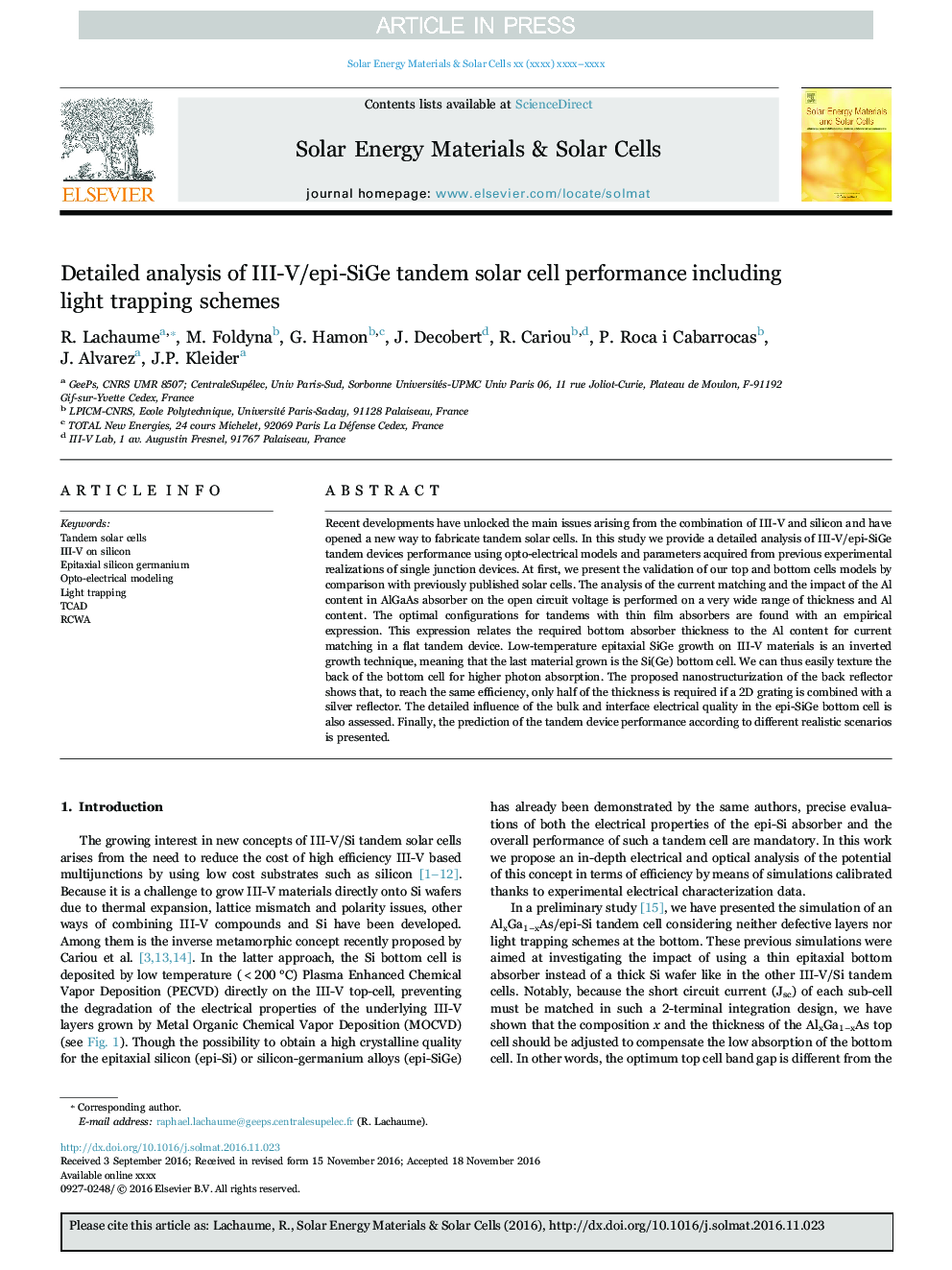| Article ID | Journal | Published Year | Pages | File Type |
|---|---|---|---|---|
| 4758860 | Solar Energy Materials and Solar Cells | 2017 | 10 Pages |
Abstract
Recent developments have unlocked the main issues arising from the combination of III-V and silicon and have opened a new way to fabricate tandem solar cells. In this study we provide a detailed analysis of III-V/epi-SiGe tandem devices performance using opto-electrical models and parameters acquired from previous experimental realizations of single junction devices. At first, we present the validation of our top and bottom cells models by comparison with previously published solar cells. The analysis of the current matching and the impact of the Al content in AlGaAs absorber on the open circuit voltage is performed on a very wide range of thickness and Al content. The optimal configurations for tandems with thin film absorbers are found with an empirical expression. This expression relates the required bottom absorber thickness to the Al content for current matching in a flat tandem device. Low-temperature epitaxial SiGe growth on III-V materials is an inverted growth technique, meaning that the last material grown is the Si(Ge) bottom cell. We can thus easily texture the back of the bottom cell for higher photon absorption. The proposed nanostructurization of the back reflector shows that, to reach the same efficiency, only half of the thickness is required if a 2D grating is combined with a silver reflector. The detailed influence of the bulk and interface electrical quality in the epi-SiGe bottom cell is also assessed. Finally, the prediction of the tandem device performance according to different realistic scenarios is presented.
Related Topics
Physical Sciences and Engineering
Chemical Engineering
Catalysis
Authors
R. Lachaume, M. Foldyna, G. Hamon, J. Decobert, R. Cariou, P. Roca i Cabarrocas, J. Alvarez, J.P. Kleider,
